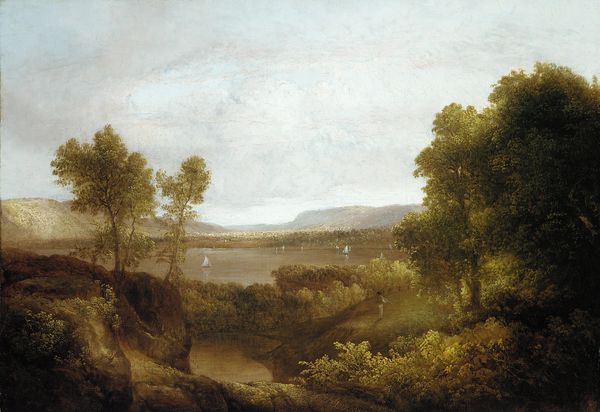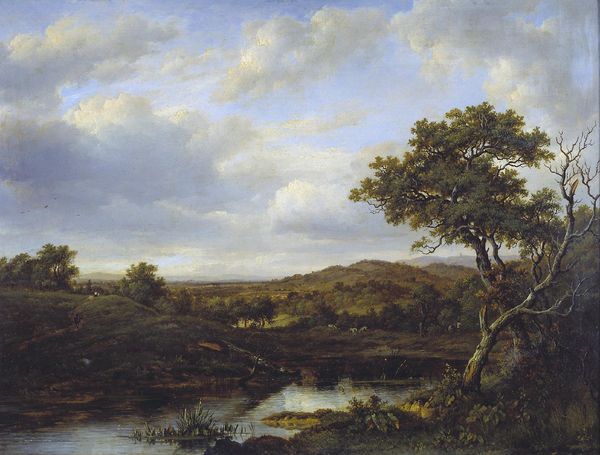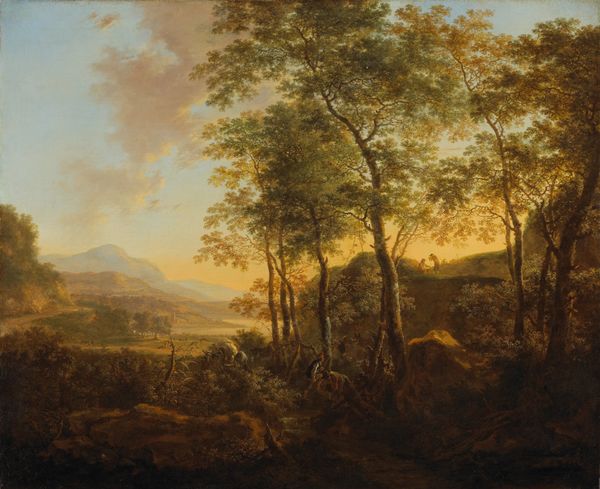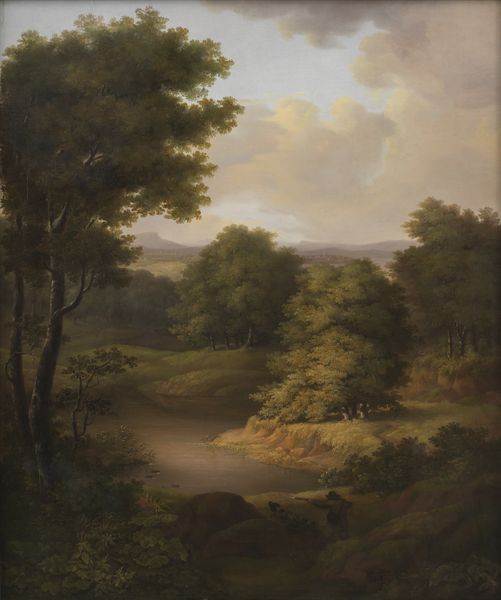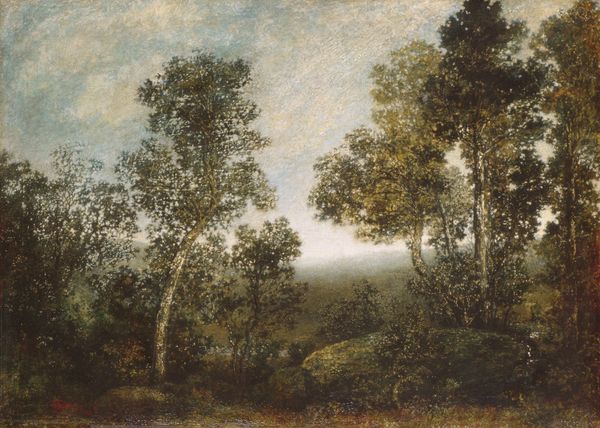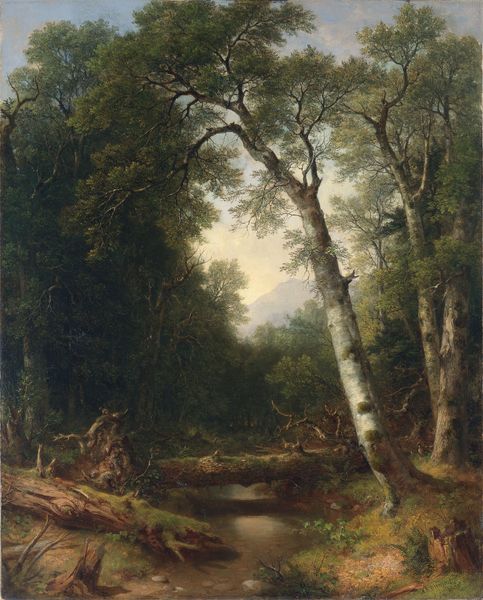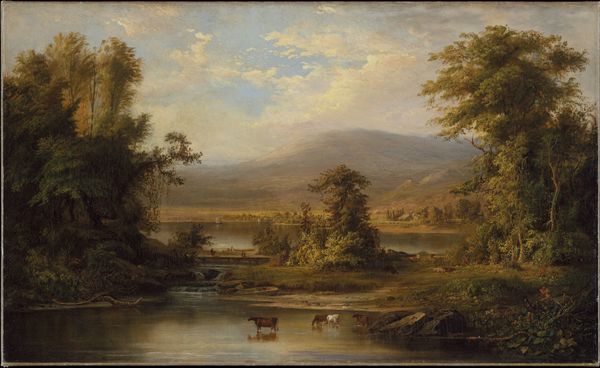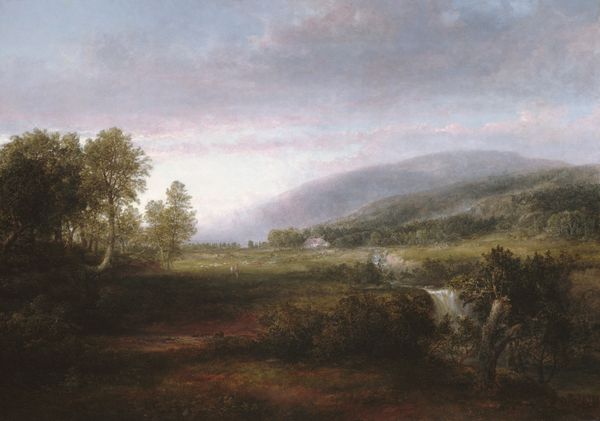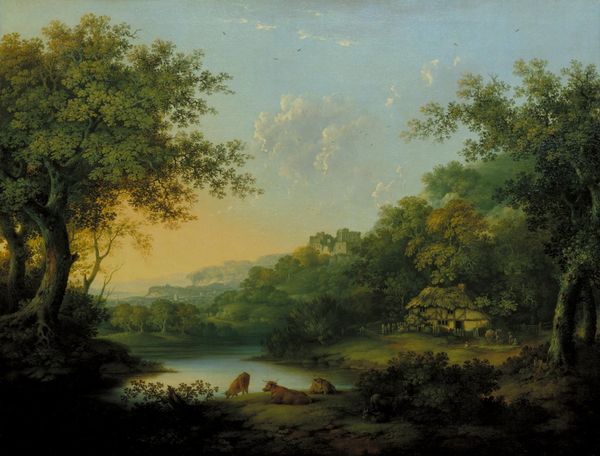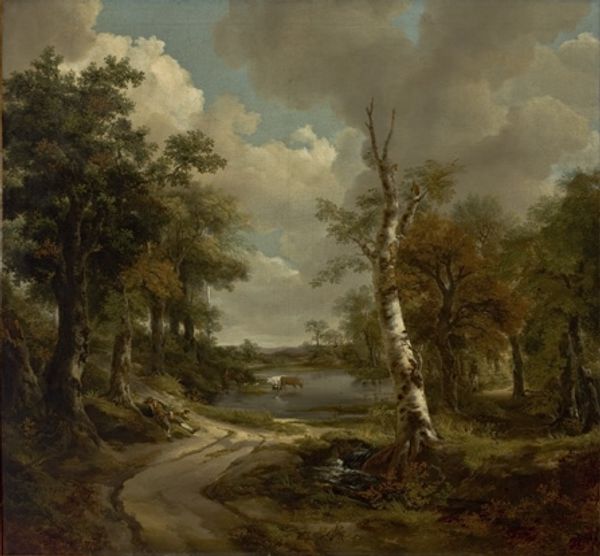
painting, plein-air, oil-paint
#
painting
#
plein-air
#
oil-paint
#
landscape
#
oil painting
#
mountain
#
hudson-river-school
#
realism
Dimensions: 30 1/4 in. × 25 in. (76.8 × 63.5 cm) Framed: 39 1/8 × 34 1/4 × 2 3/4 in. (99.3 × 87 × 7 cm)
Copyright: Public Domain
Curator: This is Thomas Doughty’s “A River Glimpse,” painted sometime between 1840 and 1850. It exemplifies the Hudson River School style and you can find it here at the Met. What's your first reaction? Editor: Serene, yet... somber. There's a solitary figure almost swallowed by the landscape, making me think about humanity's place within nature. Is it reverence or insignificance that Doughty is trying to capture here? Curator: I think it's a bit of both. Doughty’s material handling points to this. He's working en plein air, using oil paints to capture a kind of raw, almost unmediated vision of this particular place at this particular moment in time. The labor involved reflects a romantic idea, but also an inherent mediation of natural resources, right? Like the oil and pigment, the canvas. Editor: Exactly. The Hudson River School wasn’t just about pretty landscapes; it coincided with rapid industrialization and westward expansion in the US. Paintings like these acted as visual arguments in a political context – highlighting the beauty of what was at stake, or, increasingly, what was being lost. How does this serene vista factor into Manifest Destiny’s promise, or threat? Who has access to it? Who owns it? Curator: Doughty often incorporated people into his landscapes to provide scale, but their presence also raises these exact issues about ownership and access. Look closely at how the light filters through the trees – Doughty's capturing this fleeting, ethereal moment. It really drives home the precarious balance between nature's bounty and its potential vulnerability to, like, rampant industrial exploitation. Editor: I agree. And while visually pleasing, let's remember the broader social and environmental consequences tied to this kind of romantic nationalism and colonial mindset. This art functions in a way that normalizes and aestheticizes extraction and the abuse of land. How do we balance the visual appeal with the critical analysis? Curator: It’s about acknowledging the complexities of these artworks. Doughty offers a stunning portrayal of the American landscape, but one inextricably linked to resource access and their allocation along class and racial lines. Editor: Absolutely. The beauty is undeniable, but so are the historical narratives we must confront while experiencing it. Thank you for providing this deeper exploration. Curator: Thanks for the chance to bring light to those ideas.
Comments
No comments
Be the first to comment and join the conversation on the ultimate creative platform.
